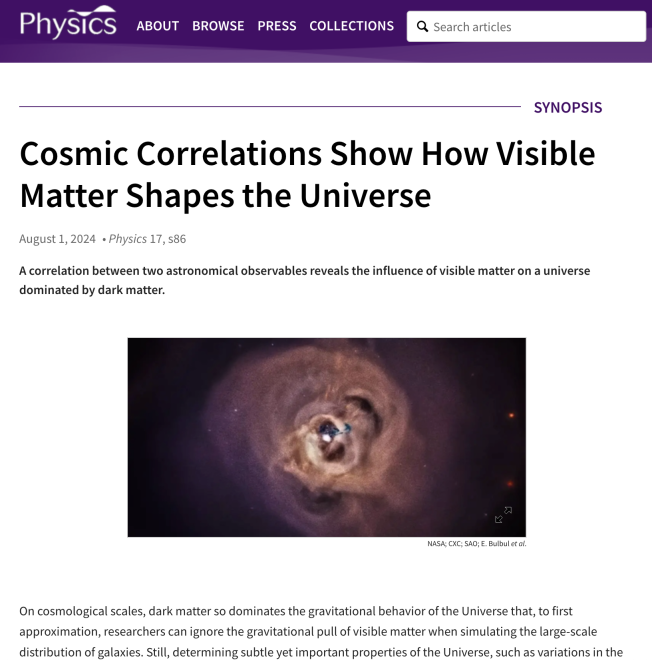X-Ray-Cosmic-Shear Cross-Correlations: First Detection and Constraints on Baryonic Effects.
Physical review letters American Physical Society (APS) 133:5 (2024) 51001
Abstract:
We report the first detection, at very high significance (23σ), of the cross-correlation between cosmic shear and the diffuse x-ray background, using data from the Dark Energy Survey and the ROSAT satellite. The x-ray cross-correlation signal is sensitive to the distribution of the surrounding gas in dark matter halos. This allows us to use our measurements to place constraints on key physical parameters that determine the impact of baryonic effects in the matter power spectrum. In particular, we determine the mass of halos in which feedback has expelled half of their gas content on average to be log_{10}(M_{c}/M_{⊙})=13.643_{-0.12}^{+0.081} and the polytropic index of the gas to be Γ=1.231_{-0.011}^{+0.015}. This represents a first step in the direct use of x-ray cross-correlations to obtain improved constraints on cosmology and the physics of the intergalactic gas.Insights on gas thermodynamics from the combination of x-ray and thermal Sunyaev-Zel’dovich data cross correlated with cosmic shear
Physical Review D American Physical Society (APS) 112:4 (2025) 043525
Abstract:
We measure the cross-correlation between cosmic shear from the third-year release of the Dark Energy Survey, thermal Sunyaev-Zel’dovich (tSZ) maps from , and x-ray maps from ROSAT. We investigate the possibility of developing a physical model able to jointly describe both measurements, simultaneously constraining the spatial distribution and thermodynamic properties of hot gas. We find that a relatively simple model is able to describe both sets of measurements and to make reasonably accurate predictions for other observables (the tSZ autocorrelation, its cross-correlation with x-rays, and tomographic measurements of the bias-weighted mean gas pressure). We show, however, that contamination from x-ray active galactic nuclei (AGN), as well as the impact of nonthermal pressure support, must be incorporated in order to fully resolve tensions in parameter space between different data combinations. Combining the tSZ and x-ray cross-correlations with cosmic shear we obtain simultaneous constraints on the mass scale at which half of the gas content has been expelled from the halo, , on the polytropic index of the gas, , and on the ratio of the central gas temperature to the virial temperature , marginalizing over AGN contributions to the signal.The IA Guide: A Breakdown of Intrinsic Alignment Formalisms
(2023)
The N5K challenge: non-limber integration for LSST cosmology
(2023)
Insights on gas thermodynamics from the combination of x-ray and thermal Sunyaev-Zel’dovich data cross correlated with cosmic shear
Physical Review D American Physical Society (APS) 112:4 (2025) 043525



